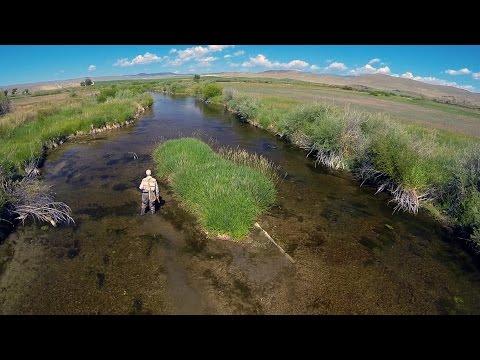Failed Inventions
#failedinventions #sinclair #tricycle #popupad #airships, #chewinggum, #betamax #plasticbags
Sinclair C5 electric tricycle
The Sinclair C5 is one of those inventions that was far too ahead of its time. Before its launch, Sir Clive Sinclair had a great reputation as a successful inventor and father of the home computer – the launch of his ZX Spectrum in 1982 revolutionised home computing.
But when his Sinclair C5 electric tricycle was launched in 1985, all of that was forgotten. Amazingly, the C5 could be legally driven on the road in the UK. However, at about 80cm height, every other vehicle tower above it, making it very unsafe. But that's not all. Battery life was low (with a range of just 32 kilometers) and the C5 could only achieve a top speed of 24kph. The reviews were dreadful, sales were poor, and Sinclair's reputation lay in tatters.
Pop-up advertisements
Pop-up ads are synonymous with bad internet browsing experiences. However, they were originally designed to actually help internet users, not hinder them. They were invented by Ethan Zuckerman, who had developed pop-up boxes as a way of advertising on web pages without directly implying an association between advertising and the contents of a web page.
Zuckerman has since apologised profusely for this incredibly annoying invention, writing that his "intentions were good".
Hydrogen airships
Many companies produced airships, but it was the emergence of the Zeppelin company that saw massive growth in their popularity. Zeppelin had a great idea – equip an airship with a luxurious cabin and fly people across the Atlantic Ocean quickly and comfortably. During the late 1920s and early 1930s, this became a popular means of getting from Europe to the USA. What was less of a good idea was to fill these balloons with highly explosive hydrogen gas. Accidents were fairly common, but the visibility of the Hindenburg disaster of 1937 (which saw 36 people lose their lives when the airship exploded as it landed) ended the age of the airship in one fell swoop.
However, the airship could soon make a surprising return. Companies like Euro Airship and Flying Whales plan on launching new environmentally-friendly airships that can circle the globe while using an estimated 80 per cent less fuel than planes. And before you ask: no, they're not filled with hydrogen, but non-flammable helium.
Chewing gum
Although chewing gum has existed for thousands of years, the modern version has been with us since 1848, when the first commercial chewing gum went on sale. Flavourings were soon added in the 1860s to boost its appeal. It could be found everywhere from the underside of school desks to the mouths of many a football manager. One of the main ingredients in modern gum is polyvinyl acetate, a kind of plastic that is very difficult to remove when it comes into contact with things like shoes and pavements. And this also makes it very time-intensive and expensive to remove.
Thankfully, a new generation of plastic-free chewing gum has started to appear, meaning that you no longer need to feel so guilty about having a good chew.
Betamax video
Most bad inventions fail because they are ill-thought-out. But in the world of home video systems, Sony's Betamax system was in fact miles better in terms of picture quality when compared to its rival Video Home System (VHS). However, it sold poorly in comparison due to the adoption of VHS by the adult film industry, as well as the higher cost of the system. Despite launching in 1975, Sony only stopped producing Betamax tapes in 2016, making it a very curious example of a relatively unsuccessful product with a very long life.
Plastic carrier bags
When invented by Swedish engineer Sten Gustaf Thulin in 1965, the plastic bag was believed to be an item that could be continually reused. However, it would take a lot of effort not to notice that the world today has a massive problem with plastic pollution, with single-use plastic bags still being used in their millions. Some studies predict that by weight, there will be more plastic in the sea than fish by 2050. Single-use plastic bags kill marine life and they also take centuries to biodegrade when buried in landfill sites.
Thankfully, now more and more retailers are turning to biodegradable bags to help reduce their impact.
#प्लास्टिक #आविष्कार #एयरशिप #चुइंगम #ट्राइसाइकिल #पॉपअप #सोनी
VisualGK, #generalknowledge, Explainer, #UPSC
विजुअल जीके, जनरल नॉलेज, सामान्य ज्ञान, विज़ुअलजीके, यूपीएससी
www.visualgk.com
#failedinventions #sinclair #tricycle #popupad #airships, #chewinggum, #betamax #plasticbags
Sinclair C5 electric tricycle
The Sinclair C5 is one of those inventions that was far too ahead of its time. Before its launch, Sir Clive Sinclair had a great reputation as a successful inventor and father of the home computer – the launch of his ZX Spectrum in 1982 revolutionised home computing.
But when his Sinclair C5 electric tricycle was launched in 1985, all of that was forgotten. Amazingly, the C5 could be legally driven on the road in the UK. However, at about 80cm height, every other vehicle tower above it, making it very unsafe. But that's not all. Battery life was low (with a range of just 32 kilometers) and the C5 could only achieve a top speed of 24kph. The reviews were dreadful, sales were poor, and Sinclair's reputation lay in tatters.
Pop-up advertisements
Pop-up ads are synonymous with bad internet browsing experiences. However, they were originally designed to actually help internet users, not hinder them. They were invented by Ethan Zuckerman, who had developed pop-up boxes as a way of advertising on web pages without directly implying an association between advertising and the contents of a web page.
Zuckerman has since apologised profusely for this incredibly annoying invention, writing that his "intentions were good".
Hydrogen airships
Many companies produced airships, but it was the emergence of the Zeppelin company that saw massive growth in their popularity. Zeppelin had a great idea – equip an airship with a luxurious cabin and fly people across the Atlantic Ocean quickly and comfortably. During the late 1920s and early 1930s, this became a popular means of getting from Europe to the USA. What was less of a good idea was to fill these balloons with highly explosive hydrogen gas. Accidents were fairly common, but the visibility of the Hindenburg disaster of 1937 (which saw 36 people lose their lives when the airship exploded as it landed) ended the age of the airship in one fell swoop.
However, the airship could soon make a surprising return. Companies like Euro Airship and Flying Whales plan on launching new environmentally-friendly airships that can circle the globe while using an estimated 80 per cent less fuel than planes. And before you ask: no, they're not filled with hydrogen, but non-flammable helium.
Chewing gum
Although chewing gum has existed for thousands of years, the modern version has been with us since 1848, when the first commercial chewing gum went on sale. Flavourings were soon added in the 1860s to boost its appeal. It could be found everywhere from the underside of school desks to the mouths of many a football manager. One of the main ingredients in modern gum is polyvinyl acetate, a kind of plastic that is very difficult to remove when it comes into contact with things like shoes and pavements. And this also makes it very time-intensive and expensive to remove.
Thankfully, a new generation of plastic-free chewing gum has started to appear, meaning that you no longer need to feel so guilty about having a good chew.
Betamax video
Most bad inventions fail because they are ill-thought-out. But in the world of home video systems, Sony's Betamax system was in fact miles better in terms of picture quality when compared to its rival Video Home System (VHS). However, it sold poorly in comparison due to the adoption of VHS by the adult film industry, as well as the higher cost of the system. Despite launching in 1975, Sony only stopped producing Betamax tapes in 2016, making it a very curious example of a relatively unsuccessful product with a very long life.
Plastic carrier bags
When invented by Swedish engineer Sten Gustaf Thulin in 1965, the plastic bag was believed to be an item that could be continually reused. However, it would take a lot of effort not to notice that the world today has a massive problem with plastic pollution, with single-use plastic bags still being used in their millions. Some studies predict that by weight, there will be more plastic in the sea than fish by 2050. Single-use plastic bags kill marine life and they also take centuries to biodegrade when buried in landfill sites.
Thankfully, now more and more retailers are turning to biodegradable bags to help reduce their impact.
#प्लास्टिक #आविष्कार #एयरशिप #चुइंगम #ट्राइसाइकिल #पॉपअप #सोनी
VisualGK, #generalknowledge, Explainer, #UPSC
विजुअल जीके, जनरल नॉलेज, सामान्य ज्ञान, विज़ुअलजीके, यूपीएससी
www.visualgk.com




